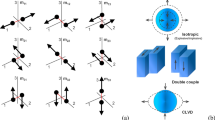Abstract
The detonation of the explosive in a blasthole generates pressure to the tune of several giga-pascals that in turn drives the breakage of rockmass in several complex ways. However, nature and the interactions of such pressure with the surrounding rockmass are not explicitly known. This is primarily due to the destructive and rapid nature of the process that hinders measurements in or around the blasthole. Accordingly, such tests are quite cumbersome, complex and costly. The instrumentation has to have standard specifications with several mega-samples per second monitoring capacity. Also, the sensors deployed for the purpose should have a steep rise time because of the fact that the event is transitory in nature. This may be one of the reasons that the focus of researchers has been on determination of energies involved in the process by indirect means. There have been attempts to understand the blasthole pressure and its interactions with the nearby rockmass but due to expensive nature of testing, the progress is not as anticipated. This study attempted the cross blasthole pressure measurements by placing pressure sensors at a distance from the blasthole. The paper presents some examples of cross borehole pressures measured in varied type of rock masses with a good range of acoustic impedance of the rockmass and its joint spacing. Attempt has been made to explain the pressure traces with the aim that further studies in this domain will lead to better understanding of rock–explosive interaction. The method is quite in infancy and it is expected that future studies shall aid in standardisation of the method thus developed.





Similar content being viewed by others
References
Brent GF, Smith GE (2000) The detection of blast damage by borehole pressure measurement. J South Afr Inst Min Metall 100(1):17–21
Cavanough G, Onederra I (2011) Development of detonation pressure and temperature gauges. https://publications.csiro.au/rpr/download?pid=csiro:EP111843&dsid=DS4. Accessed on 10 July 2018
Cunningham C (2006) Blasthole pressure: what it really means and how we should use it. In: Proceedings of the annual conference on explosives and blasting technique, vol 32(2). ISEE, pp 255–264
Duvall WI, Atchison TC (1957) Rock breakage by explosives. U. S. Department of the Interior Bureau of Mines Report of Investigations 5356
Field JE, Ladegaard-Pedersen A (1971) The importance of the reflected stress wave in rock blasting. Int J Rock Mech Min Sci Geomech Abstr 8(3):213–220
Hagan TN (1979) Rock breakage by explosives. Acta Astronaut 6(3–4):329–340
He C, Yang J, Yu Q (2018) Laboratory study on the dynamic response of rock under blast loading with active confining pressure. Int J Rock Mech Min Sci 102:101–108
Khanukayev AN (1991) Perfection of blast works on the basis of new means and technology. In: International conference of engineering blasting technique, Beijing, China, 4–7 July, pp 38–41
Müller B (1997) Adapting blasting technologies to the characteristics of rock masses in order to improve blasting results and reduce blasting vibrations. Fragblast 1(3):361–378
Nie S (2001) Study of fracture mechanism by measuring pressure history in blast holes and crack lengths in rock. In: Proceedings of the annual conference on explosives and blasting technique, vol 1, pp 291–300
Ouchterlony F, Nyberg U, Olsson M, Bergqvist I, Granlund L, Grind H (2004) Where does the explosive energy in rock blasting rounds go? Sci Technol Energ Mater 65(2):54–63
Pinet É (2011) Pressure measurement with fiber-optic sensors: commercial technologies and applications. In: 21st international conference on optical fiber sensors International Society for Optics and Photonics, vol 7753, pp 1–4
Raina AK, Murthy VMSR (2015) Measurement of blast induced pressure in bench blasting and deciphering explosive performance through rockmass response analysis—a methodology. In: 11th International symposium on rock fragmentation by blasting Fragblast11, Sydney, 24–26 August, pp 501–507
Raina AK, Murthy VMSR, Soni AK (2015) Estimating flyrock distance in bench blasting through blast induced pressure measurements in rock. Int J Rock Mech Min Sci 76:209–216
Rigby SE, Fay SD, Tyas A, Clarke SD, Reay JJ, Warren JA, Gant M, Elgy I (2018) Influence of particle size distribution on the blast pressure profile from explosives buried in saturated soils. Shock Waves 28(3):613–626
Rustan A, Nie S-L (1987) New method to test the rock breaking properties of explosives in full scale. In: 2nd international symposium on rock fragmentation by blasting Society of Experimental Mechanics, Keystone, pp 36–47
Seinov NP, Chevkin AI (1968) Effect of fissure on the fragmentation of a medium by blasting. J Min Sci 4(3):254–259
Walter PL (2004) Air-blast and the science of dynamic pressure measurements. Sound Vib 38(12):10–17
Zhang G, Zhao Y, Zhao Y, Wang X, Wei X, Ren W, Li H, Zhao Y (2018) A manganin thin film ultra-high pressure sensor for microscale detonation pressure measurement. Sensors 18(3):736
Zhu Z, Mohanty B, Xie H (2007) Numerical investigation of blasting-induced crack initiation and propagation in rocks. Int J Rock Mech Min Sci 44(3):412–424
Acknowledgements
Authors are thankful to Director CSIR-CIMFR for his permission to publish the paper. The partial financial support of Ministry of Mines, Govt. of India (Grant No. GAP/MT/NRC/DOM/003/2003-04), through a research grant is gratefully acknowledged. The help rendered by colleagues and Project Assistants at CSIR-CIMFR, Nagpur, Unit-I has been quite valuable. Sincere thanks are due to Prof. VMSR Murthy for his critical comments.
Author information
Authors and Affiliations
Corresponding author
Rights and permissions
About this article
Cite this article
Raina, A.K., Trivedi, R. Exploring Rock–Explosive Interaction Through Cross Blasthole Pressure Measurements. Geotech Geol Eng 37, 651–658 (2019). https://doi.org/10.1007/s10706-018-0635-3
Received:
Accepted:
Published:
Issue Date:
DOI: https://doi.org/10.1007/s10706-018-0635-3




